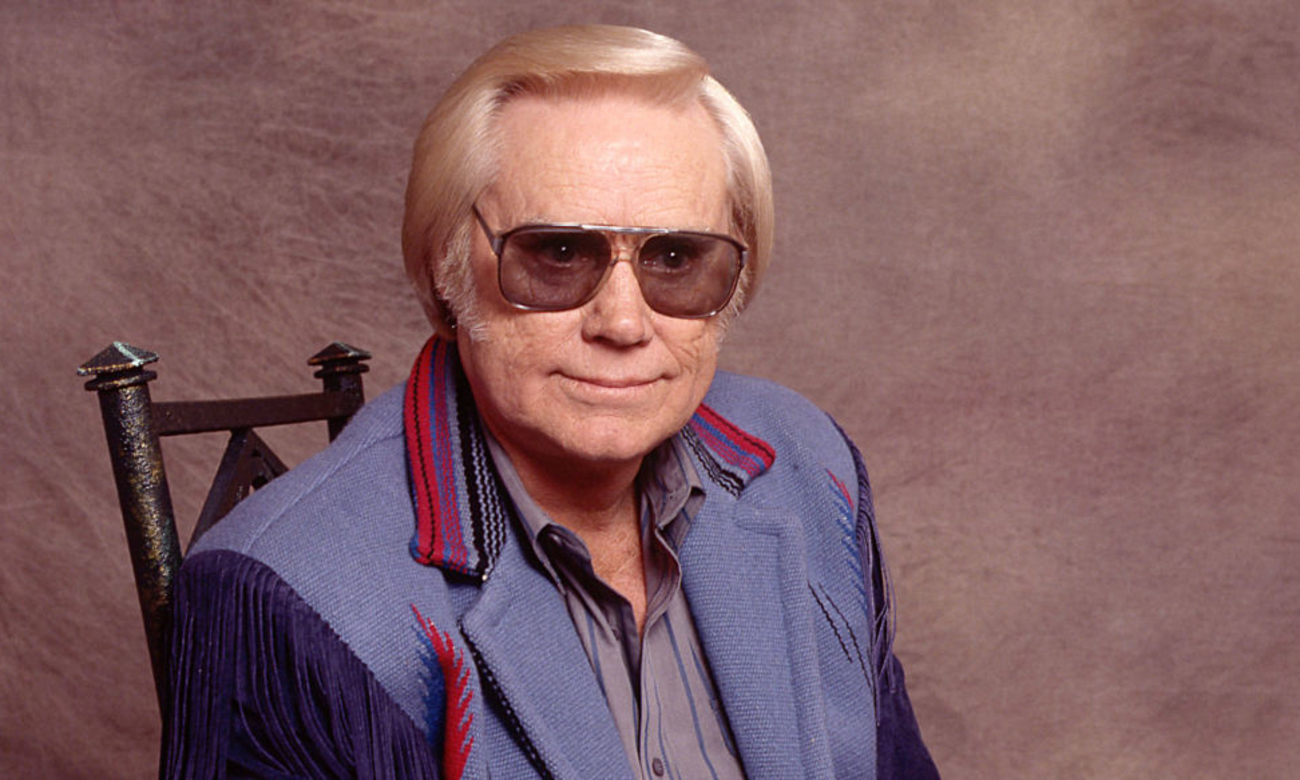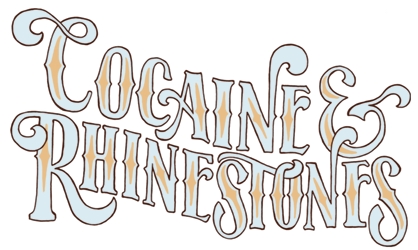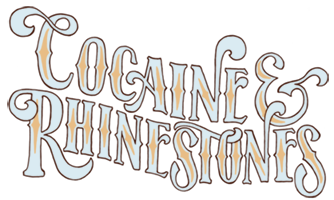
At least this whole story has a happy ending, right? Of course, whether or not that’s true depends a lot on your personal definitions of both “happy ending” and “whole story” but, either way, today we reach the final chapter of George Jones’ life. Don’t worry, it’ll all be over soon.
Contents (Click/Tap to Scroll)
- Primary Sources – books, documentaries, etc.
- Transcript of Episode – for the readers
- Liner Notes – list of featured music, online sources, further commentary
Primary Sources
Primary sources for this episode can be found in The Main Library and the Season 2 Library.
Transcript of Episode
As part of my agreement with Simon & Schuster to publish a book adaptation of Season 2, the transcripts that have been freely available for over a year will be temporarily removed from this website. Please consider ordering a copy of Cocaine & Rhinestones: A History of George Jones and Tammy Wynette through your favorite local bookstore or requesting that your local library order a copy you can check out.
Liner Notes
Excerpted Music
This episode featured excerpts from the following songs, in this order [with links to purchase or stream where available]:
- George Jones – “Still Doin’ Time” [Amazon / Apple Music]
- George Jones & Merle Haggard – “Yesterday’s Wine” [Amazon / Apple Music]
- George Jones & Merle Haggard – “C.C. Waterback” [Amazon / Apple Music]
- George Jones & Merle Haggard – “Must’ve Been Drunk” [Amazon / Apple Music]
- George Jones & Merle Haggard – “No Show Jones” [Amazon / Apple Music]
- George Jones – “Shine On” [Amazon / Apple Music]
- George Jones – “She Hung the Moon” [Amazon / Apple Music]
- George Jones – “Almost Persuaded” [Amazon / Apple Music]
- George Jones – “Ol’ George Stopped Drinkin’ Today” [Amazon / Apple Music]
- George Jones – “I Always Get Lucky with You” [Amazon / Apple Music]
- George Jones – “Tennessee Whiskey” [Amazon / Apple Music]
- Eddy Raven – “I Should’ve Called ” [Amazon / Apple Music]
- George Jones – “I Should’ve Called” [Amazon / Apple Music]
- George Jones – “The Show’s Almost Over” [Amazon / Apple Music]
- George Jones – “Radio Lover” [Amazon / Apple Music]
- George Jones – “The Girl at the End of the Bar” [Amazon / Apple Music]
- Ray Charles & George Jones – “We Didn’t See a Thing” [Amazon / Apple Music]
- Dean Martin – “You’ve Still Got a Place in My Heart” [Amazon / Apple Music]
- George Jones – “You’ve Still Got a Place in My Heart” [Amazon / Apple Music]
- George Jones – “She’s My Rock” [Amazon / Apple Music]
- Stoney Edwards – “She’s My Rock” [Amazon / Apple Music]
- George Jones & Leona Williams – “Best Friends” [Amazon / Apple Music]
- George Jones – “Who’s Gonna Fill Their Shoes” [Amazon / Apple Music]
- George Jones – “The One I Loved Back Then (The Corvette Song)” [Amazon / Apple Music]
- George Jones – “Somebody Wants Me Out of the Way” [Amazon / Apple Music]
- George Jones – “Wine Colored Roses” [Amazon / Apple Music]
- George Jones – “The Right Left Hand” [Amazon / Apple Music]
- George Jones – “I Turn to You” [Amazon / Apple Music]
- George Jones – “The Bird” [Amazon / Apple Music]
- George Jones – “I’m a Survivor” [Amazon / Apple Music]
- George Jones – “The Old Man No One Loves” [Amazon / Apple Music]
- Shelby Lynne ft. George Jones – “If I Could Bottle This Up” [Amazon / Apple Music]
- Dwight Yoakam – “Honky Tonk Man” [Amazon / Apple Music]
- George Jones – “One Woman Man” [Amazon / Apple Music]
- George Jones – “The King Is Gone (So Are You)” [Amazon / Apple Music]
- George Jones – “Writing on the Wall” [Amazon / Apple Music]
- George Jones – “Hell Stays Open All Night Long” [Amazon / Apple Music]
- George Jones – “You Oughta Be Here with Me” [Amazon / Apple Music]
- George Jones – “Somebody Always Paints the Wall” [Amazon / Apple Music]
- George Jones – “I Sleep Like a Baby” [Amazon / Apple Music]
- George Jones – “Someone That You Used to Know” [Amazon / Apple Music]
- George Jones – “I Want to Grow Old with You” [Amazon / Apple Music]
- George Jones – “Cold Day in December” [Amazon / Apple Music]
- George Jones – “Six Foot Deep, Six Foot Down” [Amazon / Apple Music]
- George Jones – “If the World Don’t End Tomorrow” [Amazon / Apple Music]
- Blake Shelton – “Ol’ Red” [Amazon / Apple Music]
- George Jones – “Ol’ Red” [Amazon / Apple Music]
- George Jones & Emmylou Harris – “All Fall Down” [Amazon / Apple Music]
- Randy Travis & George Jones – “A Few Ole Country Boys” [Amazon / Apple Music]
- George Jones – “You Couldn’t Get the Picture” [Amazon / Apple Music]
- George Jones – “She Loved a Lot in Her Time” [Amazon / Apple Music]
- George Jones ft. Vince Gill, Mark Chesnutt, Garth Brooks, Travis Tritt, Joe Diffie, Alan Jackson, Pam Tillis, T. Graham Brown, Patty Loveless and Clint Black – “(I Don’t Need Your) Rockin’ Chair” [Amazon / Apple Music]
- George Jones – “There’s the Door” [Amazon / Apple Music]
- Alan Jackson – “Don’t Rock the Jukebox” [Amazon / Apple Music]
- George Jones – “The Love in Your Eyes” [Amazon / Apple Music]
- George Jones – “I Must Have Done Something Bad” [Amazon / Apple Music]
- George Jones – “High Tech Redneck” [Amazon / Apple Music]
- George Jones & Alan Jackson – “A Good Year for the Roses” [Amazon / Apple Music]
- Vince Gill – “One More Last Chance” [Amazon / Apple Music]
- Patty Loveless ft. George Jones – “You Don’t Seem to Miss Me” [Amazon / Apple Music]
- George Jones ft. Waylon Jennings, Merle Haggard, Willie Nelson, Bobby Bare and Johnny Counterfit – “It Don’t Get Any Better Than This” [Amazon / Apple Music]
- George Jones – “Choices” [Amazon / Apple Music]
- George Jones – “Ain’t Love a Lot Like That” [Amazon / Apple Music]
- George Jones – “This Wanting You” [Amazon / Apple Music]
- George Jones – “The Rock” [Amazon / Apple Music]
- George Jones – “I Am” [Amazon / Apple Music]
- George Jones – “Amazing Grace” [Amazon / Apple Music]
- George Jones – “Here in the Real World” [Amazon / Apple Music]
- Alan Jackson – “Here in the Real World” [Amazon / Apple Music]
- Merle Haggard – “Things Have Gone to Pieces” [Amazon / Apple Music]
- George Jones – “Sing Me Back Home” [Amazon / Apple Music]
- George Jones & Georgette Jones – “You and Me and Time” [Amazon / Apple Music]
- George Jones – “When the Last Curtain Falls” [Amazon / Apple Music]
Excerpted Video
These videos were excerpted in the episode. For any number of reasons, YouTube (or DailyMotion) may remove them in the future but here they are for now:
Commentary and Remaining Sources
In the audio version of this episode, I said the title of that Elvis album incorrectly. It was just a verbal typo I didn’t catch until it was too late to easily fix and it’s not worth going back to fix now because that was never an accurate title or anything more than another marketing stunt.
As with the Wynonna episode in Season 1, I’m aware of all the tabloid stuff I could have included that has a whole lot to do with the personal lives of George Jones’ family but a bunch of nothing to do with his career. When we’re talking about artists like George Jones and Tammy Wynette, who were selling their personal lives as part of the package, it becomes necessary to cover whatever aspects of their personal lives help understand the package. But I do not feel the need to bring up every little piece of drama, especially those that don’t ultimately affect the whole story in a fundamental way.
Anyone who’s worn a rhinestone suit will tell you they’re heavier and hotter than most people who haven’t worn one would expect. I don’t know about breathability but in Juan Belmonte’s autobiography he talks about how heavy el traje de luces is to wear.
That is Billy Sherril playing the part of the bus driver in the video for “Who’s Gonna Fill Their Shoes.”
As for “Beer Run,” Todd Snider has a whole bit about this and here’s a link to a video of him telling the story, so you should really just go watch that because I’m not going to rewrite Todd Snider material about what sounds a lot like people rewriting Todd Snider material. If you’re lazy and feel like missing out on a great story from a great entertainer, the gist of it is that Todd wrote a song with essentially the same exact chorus, played it live in Nashville and then it shows up on the radio with different verses and credited to someone else as a writer. A legal decision was made to agree each song was written without foreknowledge of the other and I am not privy to any information which may dispute that.
All of my main sources for Season 2 can be found on The Library and Season 2 Library pages. I’m pretty sure I’ve given individual commentary on all the Season 2-specific sources but I’ll make sure to double check and cover anything I missed in the Liner Notes of the next episode because, yes, there is still one more episode left in this season. So, come back in a couple weeks if you want to hear the rest of what I have to say about George Jones.

